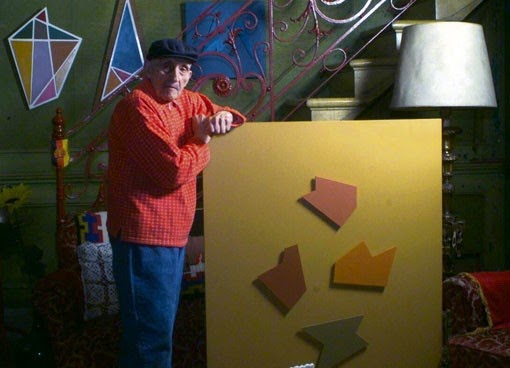Exploring the Vibrant Geometry of Raúl Lozza
Concrete Art Movement Artist.
Among the pioneers of the Latin American concrete art movement, Argentinian artist Raúl Lozza stands out for his meticulous compositions brimming with color, dynamism, and optical intrigue. Though largely immersed in geometry, his body of work reveals a creative spirit enraptured by the interplay of shapes, colors, and the effects they produce on the viewer.
From Buenos Aires to Paris
Born in Buenos Aires in 1911, Lozza embarked on his artistic journey through drawing and painting classes as a teenager. In the 1930s, he co-founded the Asociación de Arte Concreto-Invención, an artistic collective that propelled the concrete art style in Argentina. This movement centered on abstract geometric forms and precise aesthetic order rather than figural representation.
In 1936, Lozza traveled to Paris to further hone his skills. There he mingled with giants of modern art like Piet Mondrian, connecting with European abstractionists. Back in Buenos Aires, he continued developing his signature style based on geometric abstraction.
The Magnetic Pull of Geometry
At the core of Lozza’s visual language sits his passion for geometry. Reminiscent of artistic contemporaries like Josef Albers, Lozza explored the dynamic interplay of squares, rectangles, circles, and lines. By subtly tweaking shapes and the relationships between them, his compositions generate flux, rhythm, and intrigue.
Lozza produced varied series where geometry takes center stage. The “Perfection of Forms” pays homage to the grandeur of geometric purity. The “Movimiento Generativo” series reveals shapes progressively transforming into new configurations. Other series highlight hypnotic vibrations produced through color and line.
Kinetic Illusions and Optical Effects
While grounded in geometry, Lozza’s work activates visual perception through clever illusions and optical effects. By leveraging contrast, repetition and placement, his designs seem to pulsate, swell and contract before the viewer’s eye. These kinetics usher the viewer into an experience that feels alive.
Lozza also produced actual moving pieces such as his “Cinetic Sections,” marrying concrete art and technology. These mobiles used geometry to showcase perpetual motion.
Universal Language
While concrete art flourished in Latin America, Lozza’s aesthetic vocabulary transcends boundaries. His work speaks a universal language where shapes, colors and composition produce visceral reactions. While intensely rational, his designs unlock new ways of seeing through a sublime interplay of forms.
Over his decades-long career until his death in 1991, Raúl Lozza helped propel concrete art from Latin America onto the global stage. Through masterful geometric compositions, he proves that precision and technical rigor can unleash boundless visual fascination.
Concrete Art Movement Artists:
Joaquín Torres García, Spanish, 1874–1949
Theo van Doesburg, Dutch, 1883–1931
Georges Vantongerloo, Belgian, 1886–1965
Josef Albers, German, 1888–1976
Alberto Magnelli, Italian, 1888–1970
Camille Graeser, Swiss, 1892–1980
Adolf Fleischmann, German, 1892–1968
Leo Leuppi, Swiss, 1893–1972
Henryk Stazewski, Polish, 1894–1988
Marcelle Cahn, French, 1895–1981
Galliano Mazzon, Italian, 1896–1978
Atanasio Soldati, Italian, 1896–1953
Otto Gustav Carlsund, Russian, 1897–1948
Robert Strubin, Swiss, 1897–1965
Fritz Glarner, American, 1899–1972
Friedrich Vordemberge-Gildewart, German, 1899–1962
Cesar Domela, Dutch, 1900–1992
Lolo Soldevilla, Cuban, 1901–1971
Hans Hinterreiter, Swiss, 1902–1989
Richard Paul Lohse, Swiss, 1902–1988
Leon Arthur Tutundjian, French, 1905–1968
Bruno Munari, Italian, 1907–1998
Sandu Darie, Romanian, 1908–1991
Luigi Veronesi, Italian, 1908–1998
Max Bill, Swiss, 1908–1994
Richard Mortensen, 1910–1993
Aurelie Nemours, French, 1910–2005
Raul Lozza, Argentinean, 1911–2008
Olle Baertling, Swedish, 1911–1981
Lothar Charoux, Austrian, 1912–1987
Verena Loewensberg, Swiss, 1912–1986
Mario Ballocco, Italian, 1913–2008
Carmelo Arden Quin, French, 1913–2010
Carmen Herrera, American, 1915
Pablo Palazuelo, Spanish, 1916–2007
Lennart Rodhe, Swedish, 1916–2005
Gottfried Honegger, Swiss, 1917
Mario Nigro, Italian, 1917–1992, 10
Nadir Afonso, Portuguese, 1920
Lidy Prati, Argentinean, 1921–2008
Tomás Maldonado, Argentinean, 1922
Ivan Serpa, Brazilian, 1923–1973
Günter Fruhtrunk, German, 1923–1982
Luis Sacilotto, Brazilian, 1924–2003
Gyula Kosice, Argentinean, 1924
François Morellet, French, 1926
Yaacov Agam, Israeli, 1928
Cesar Paternosto, Argentinean, 1931
Rubem Ludolf, Brazilian, 1932–2010
Andrzej Nowacki, Polish, 1953
Silvestre, Cuban, 1966




